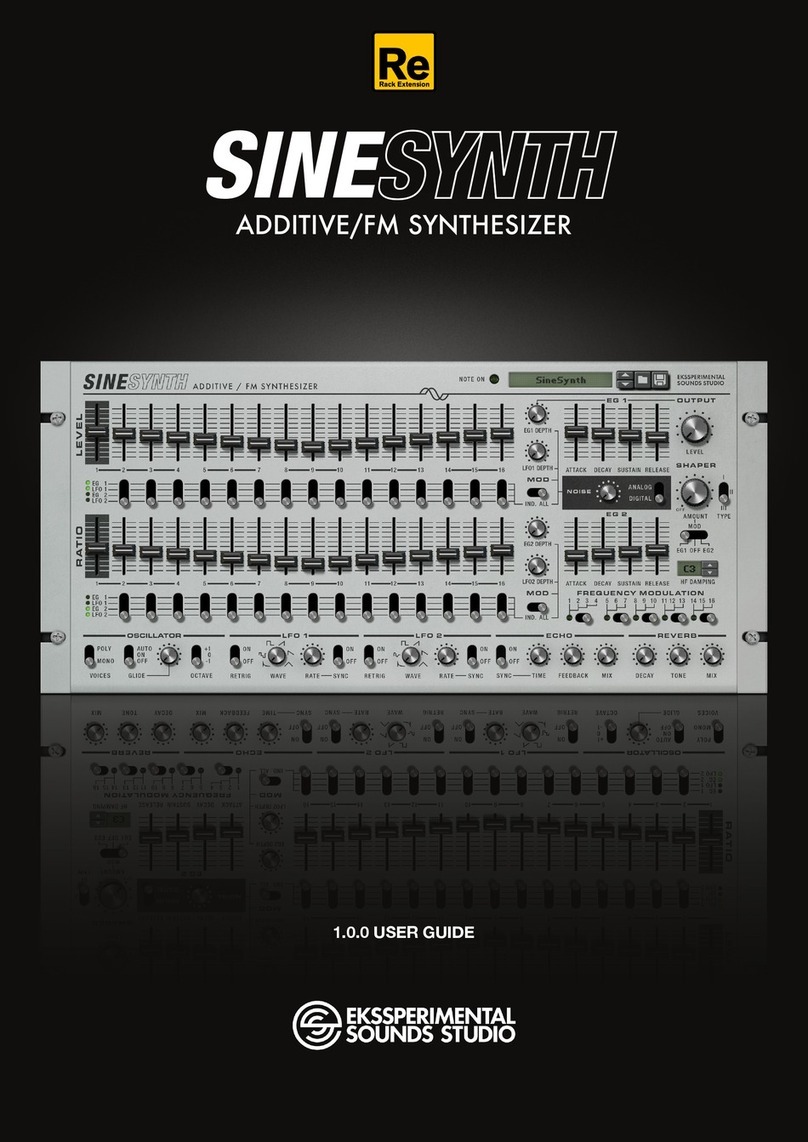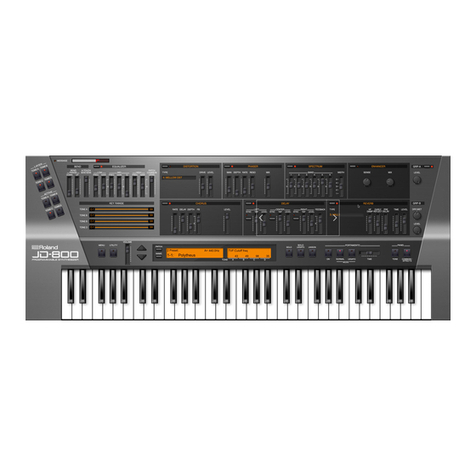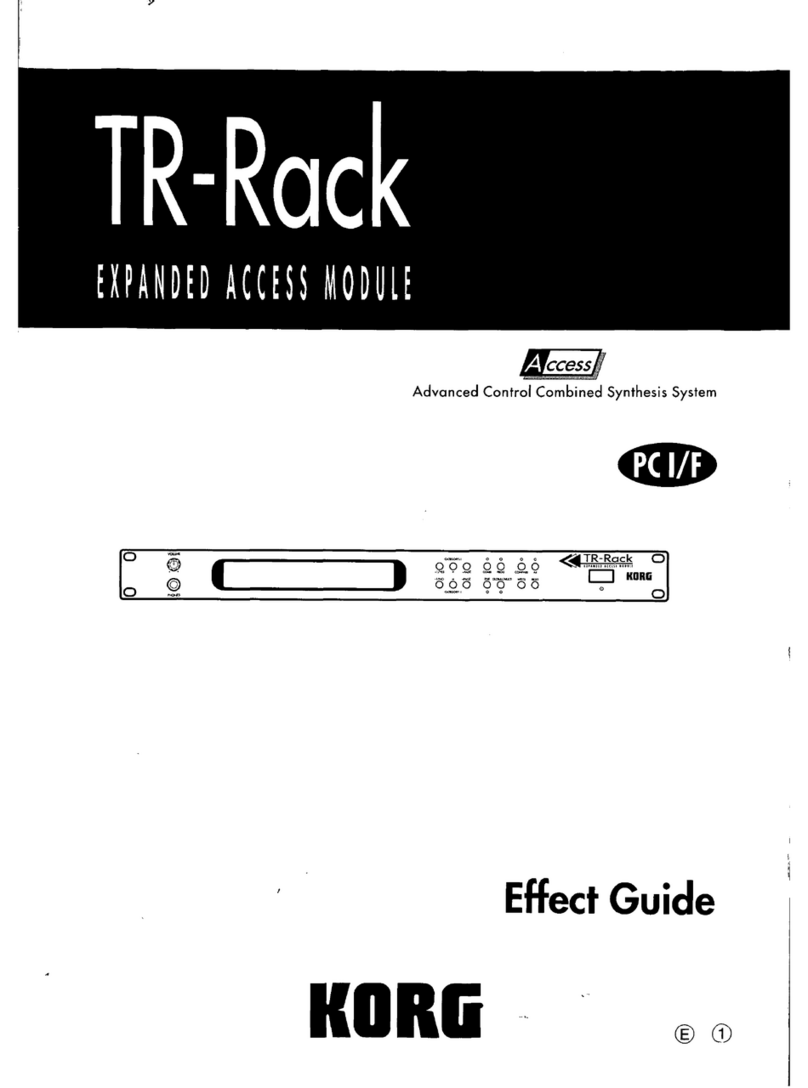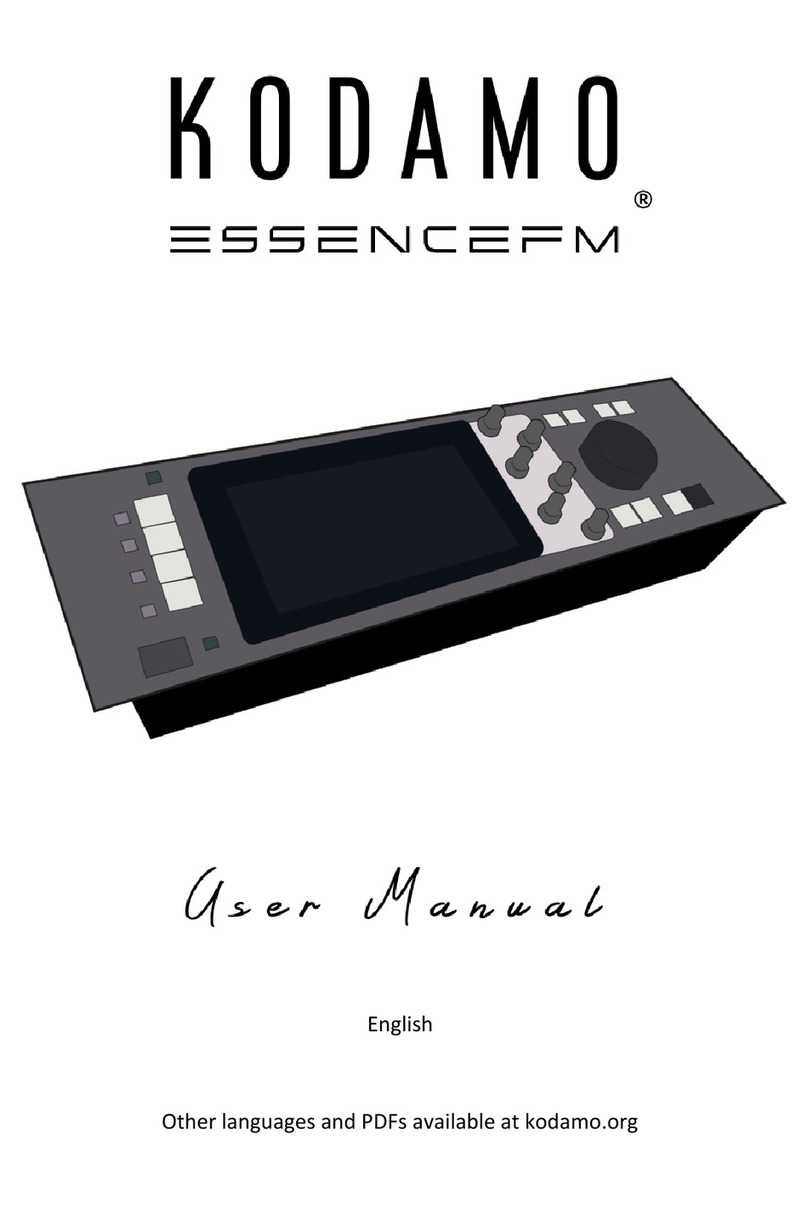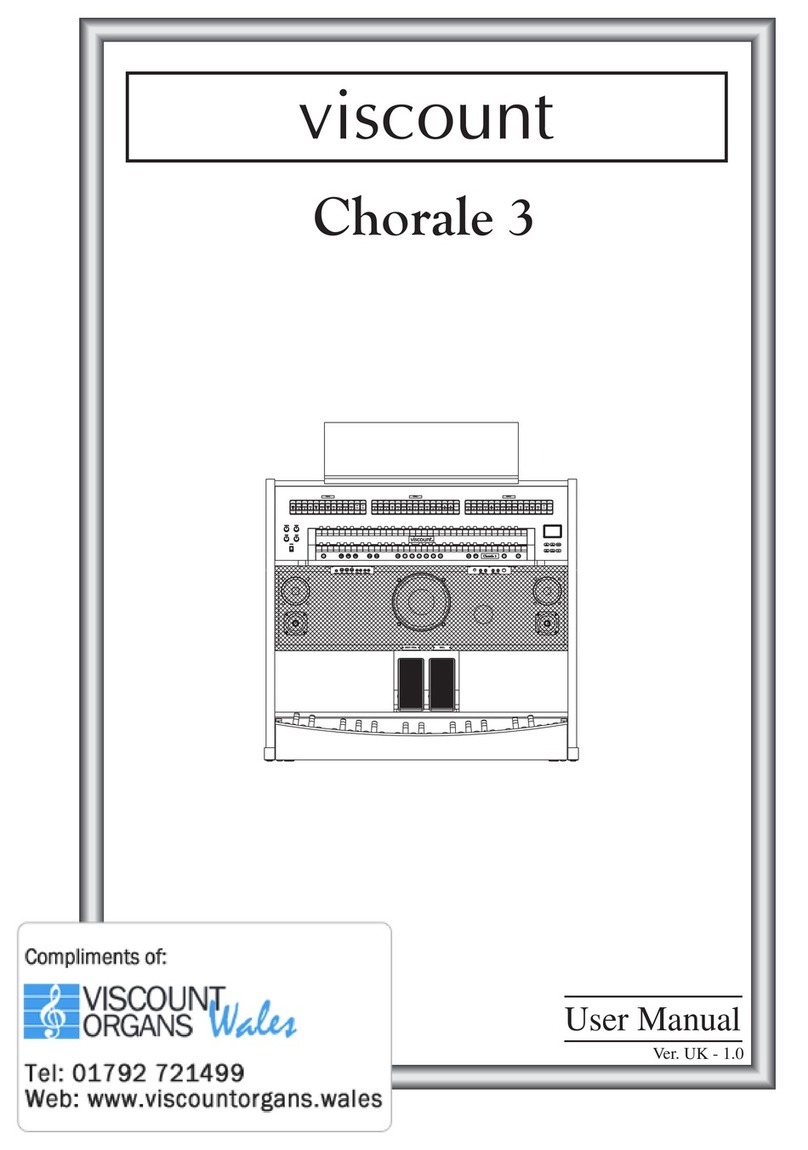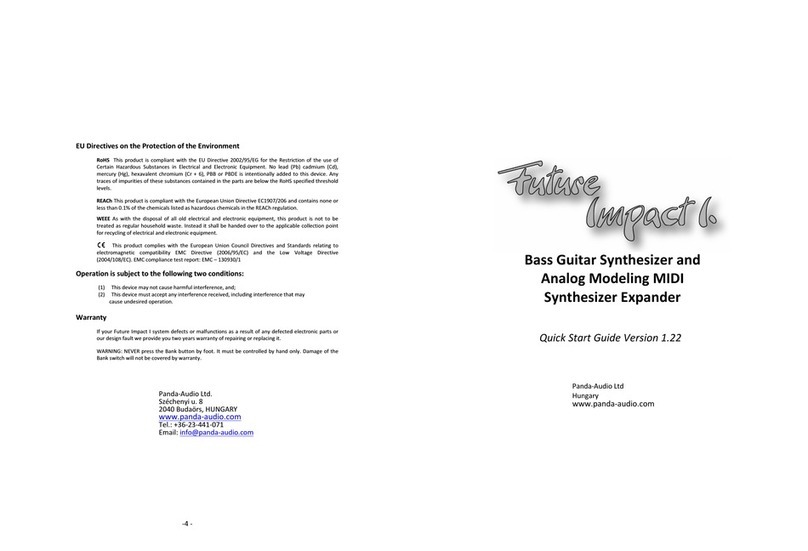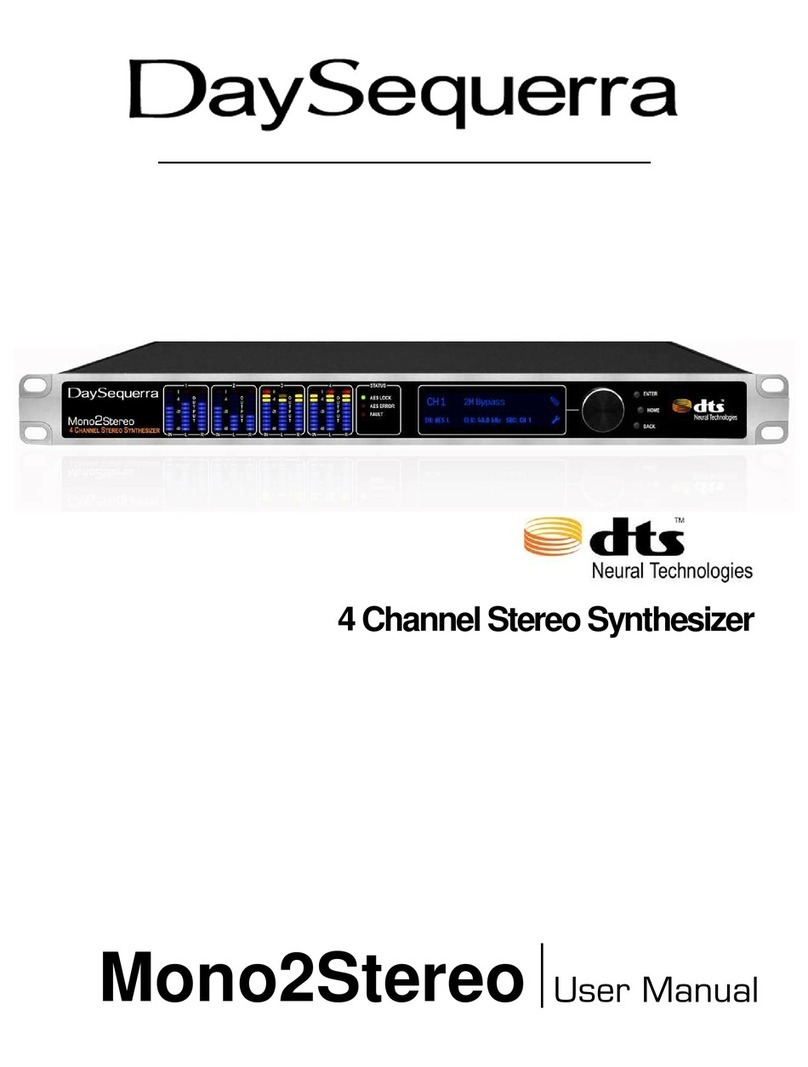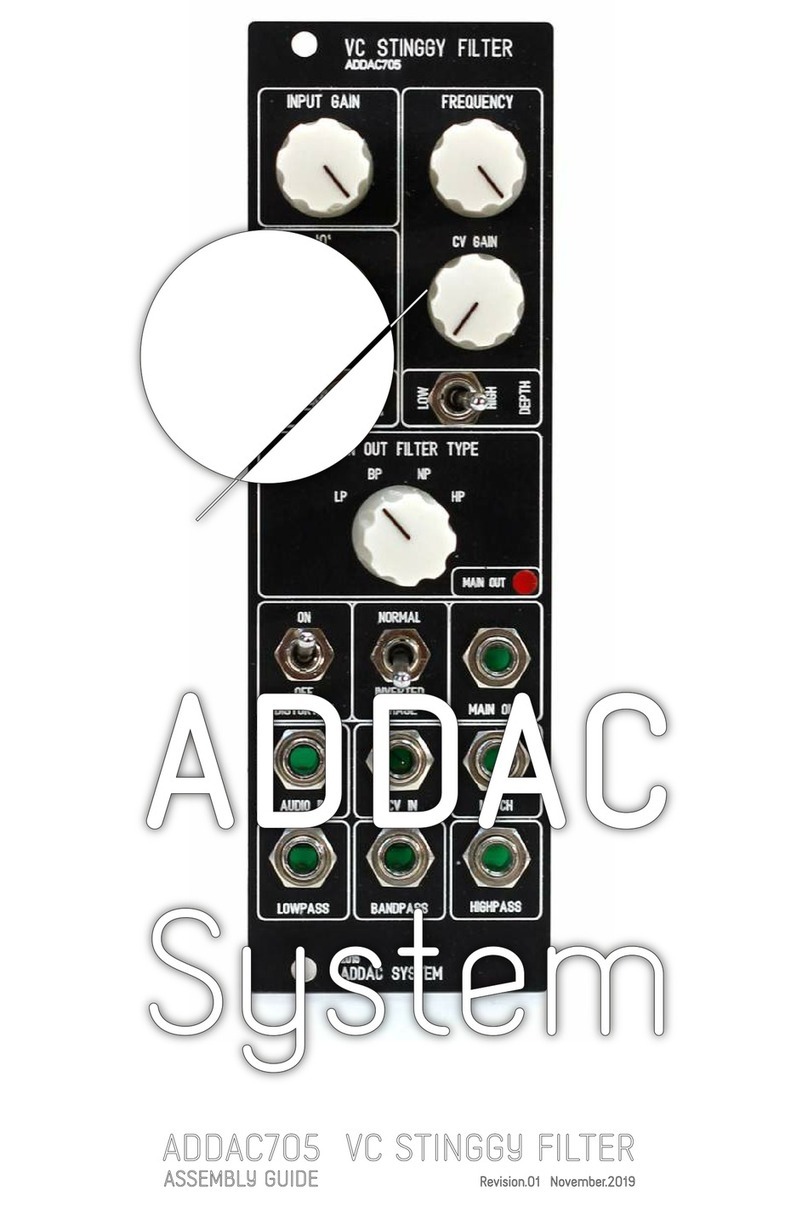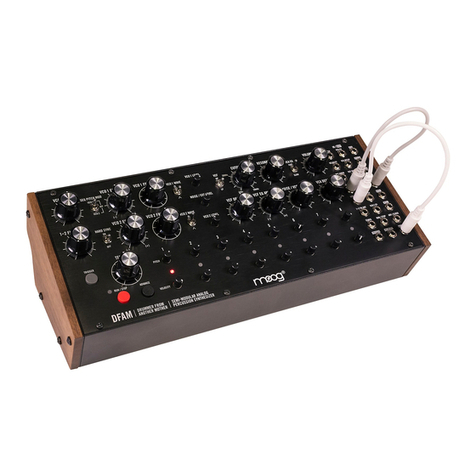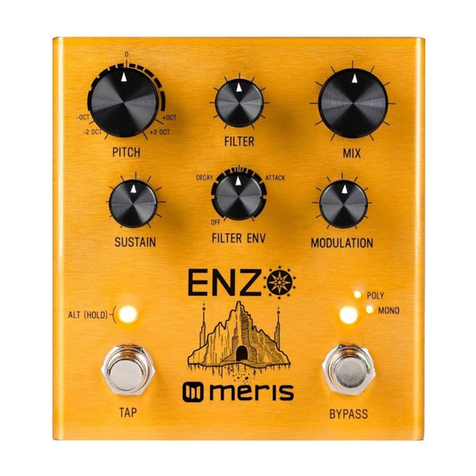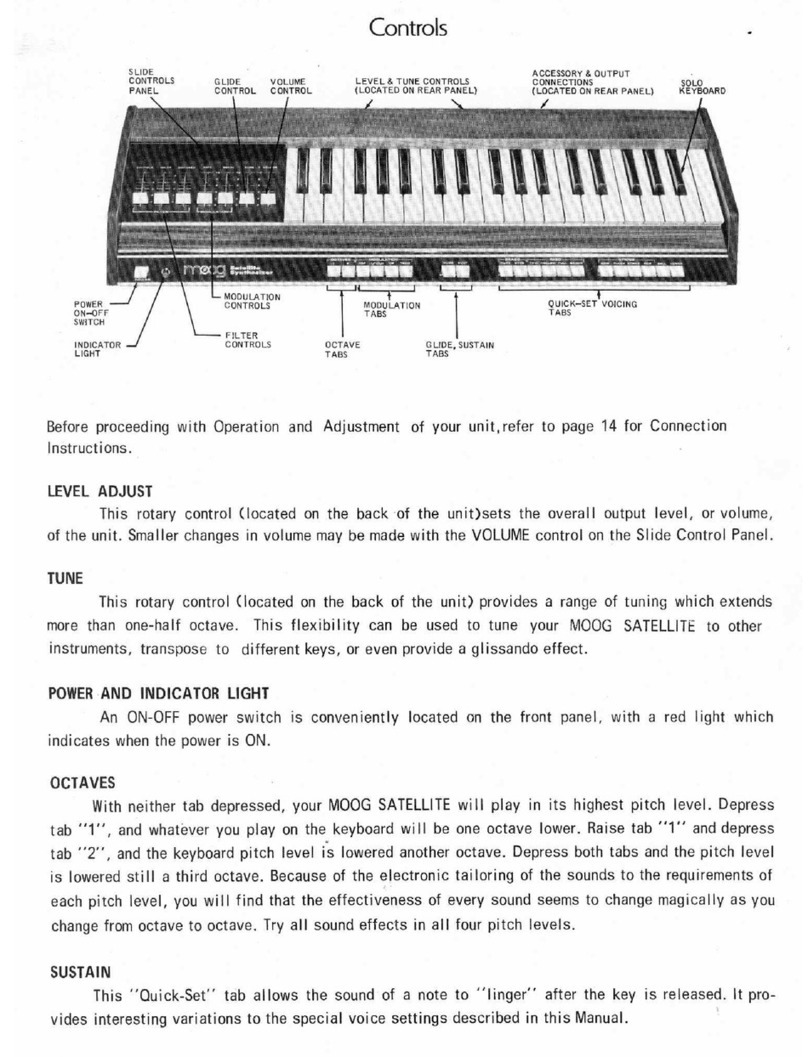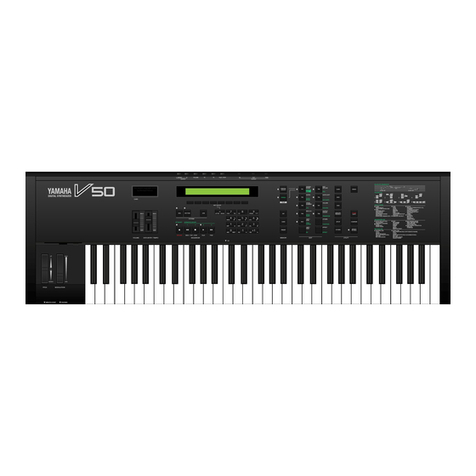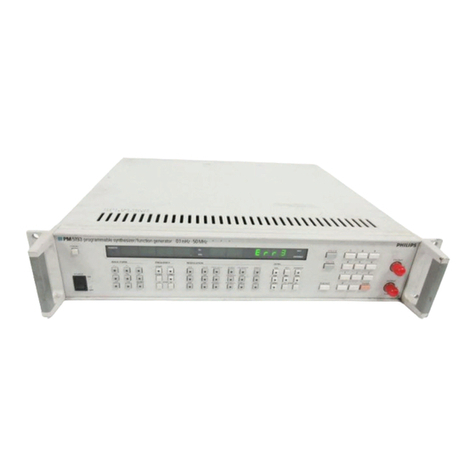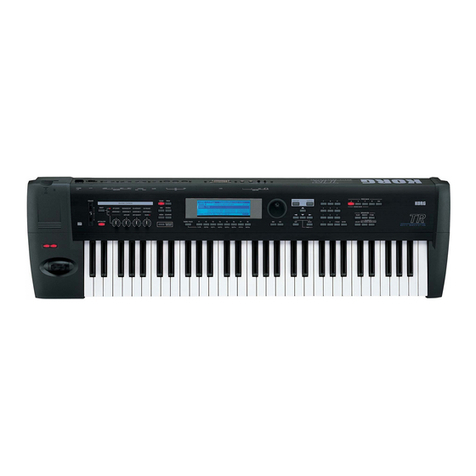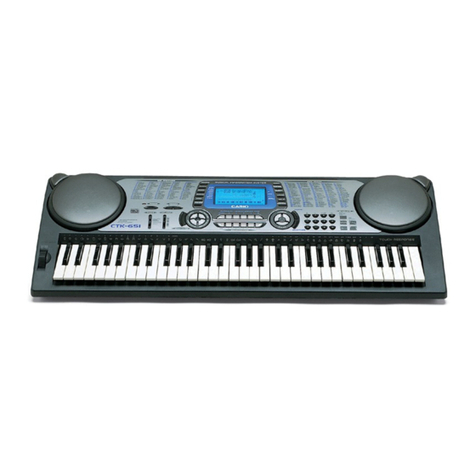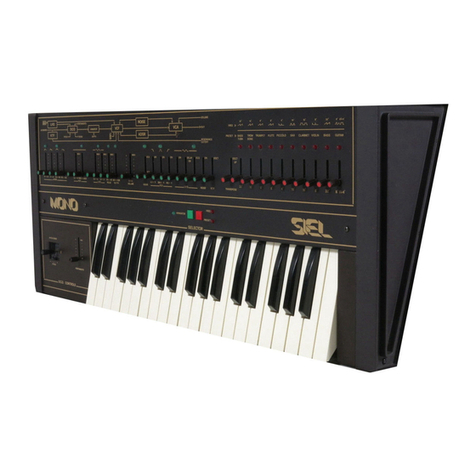Ekssperimental Sounds ES400 User manual

USER GUIDE
ES400

Thank you for choosing Ekssperimental Sounds ES400 FM Synthesizer.
The ES400 incorporates advanced synthesizer technology and features
developed for the Reason rack environment with the added convenience and
versatility of CV controll of parameters via input jacks on the back panel.
We urge you to read this user guide thoroughly in order to make the most of
your ES400 FM Synthesizer.
INTRODUCTION

VOICES
Switch between polyphonic or monophonic modes
GLIDE MODE
OFF/ON/AUTO
(Auto will engage Glide only when notes overlap)
GLIDE TIME
Time to reach the next note when Glide is active
S.PEDAL
Activate for use with sustain pedal
TRANSPOSE
Set the tuning with -/+ Octave, Semi notes or Fine
(cents)
DISPLAY - KEYS
Vel.Sens
Velocity scaling of each OP level
Levl.Scl
This parameter makes it possible to gradually lower
the OP depth as higher notes on the keyboard are
played.
Rate.Scl
This parameter makes it possible to gradually
shorten the overall envelope length (increase EG
rates) as higher notes on the keyboard are played.

RATIOS
Set the ratio by clicking and dragging on the wave
form or the value below it.
The specic frequency ratios have been chosen as
the most useful for voice programming.
OP 1 is xed at “1.0”, a pitch of 440 Hz will be
produced when the A3 key is pressed (unless
Transposed function is used).
A ratio of 0.50 produces a pitch one octave lower,
and a ratio of 2.00 produces a pitch one octave
highe, and so on. The fractional ratios – 1.73, for
example—produces complex waveforms when
combined with operators set to other ratios,
permitting the creation of an unlimited variety of
sound effects including extremely realistic bells,
explosions, etc.
DISPLAY - OP1-4
Operator settings
MUTE OPERATORS
By clicking the Operator headlines you can mute the
operators independently.
LEVEL
Set the overall level of each Operator.
TUNE
Tuning will nely adjust the ratio by -/+ 10%

SPEED/SYNC
Set the speed from 0 (slow) to 10 (fast). Click
the “SPEED” lebel to switch between free
running and synced ratios.
SHAPE
Select the shape by clicking the name (pop up)
or click and drag up/down on the waveform.
RETRIG
When set to RETRIG the LFO will restart for
each new note.
P.Mod & A.Mod
Pitch modulation and amplitude modulation of
each OP. Since the ratio of operator 2, 3 and
4 is always in relation to OP1 their pitch will
change even if only OP1 is modulated with the
LFO.
MW.Depth
Scale the modulation by the mod wheel.
DISPLAY - LFO
Triangle
Saw Down
Saw Up
Pulse
Random
Saw Exponential
WAVEFORMS LFO
Low Frequency Oscillators can be used for tremolo, vibrato, sweeps, repetetive or randomizing effects.

DISPLAY - FX
Spice up your sound with these FX!
REVERB
Change the time of the
reverberation effect by either click
and drag on the visualisation or the
amount shown below it.
BYPASS
Clicking on the REVERB headline
will toggle bypass on/off.
HI DAMP
Dampening of higher frequencies
LO DAMP
Dampening of lower frequencies
MIX
The level of the effect.
FX ORDER
Toggle the effects order by clicking
the arrow between the Reverb and
Echo visualizations.
PRE FXs
These effects are applied to the
sound directly after the VCA and
then routes to either the Reverb
or the Echo depending on the FX
ORDER.
BYPASS
Clicking on the effect headline will
toggle bypass on/off.
FILTER
6dB/oct high pass and 12dB/oct
low pass lter makes it easy to cut
unwanted frequencies.
DIST
Distortion with amount and tonality
control.
CHORUS
Widening your sounds with this 3
voice stereo chorus effect.
ECHO
Change the rate of the Echo
by either click and drag on the
visualization or the amount shown
below it.
BYPASS
Clicking on the ECHO headline will
toggle bypass on/off.
TIME/SYNC
Clicking on “Time” will toggle
Synced mode on/off.
FEEDBACK
The amount of repeats
DAMP
Dampening of higher frequencies
for each repetition
MIX
The level of the effect.

ATTACK TIME
This controls the time for the
sound to reach maximum level
when a note is played.
HOLD TIME
Controls how long the maximum
level should be held.
DECAY TIME
Controls how long it take for the
sound the decrease to sustain
level after the hold time.
SUSTAIN LEVEL
Determines the continuous level to
maintain after decay have nished,
as long as a note is played.
RELEASE TIME
The time it take for the sound to
completely fade out after the note
has been released.
THE ENVELOPE GENERATORS
4 sets of envelope generator controls
TIME
EG CURVE (Backside)
Set the curve of Attack, Decay and
Release from linear to exponential. Use
exponential for a faster rise/fall speed.
LINEAR
EXPONENTIAL

Operators
When the output of one operator
is fed to the modulation input
of a second operator a whole
spectrum of harmonics is created
that can form an incredibly diverse
range of complex waveforms.
Each operators output can be set
to another operators input or to
the audio output, this routing is
controlled by the Algorithm.
Algorithm
8 different routings of the 4
Operators.
Wave
This will fold the OP waveforms
from smooth Sine to a sharper
wave for a fuzzier sound.
Feedback
This controls the amount of
feedback of OP4.
FM SYNTHESIS
Operators, Algorithms, Feedback and Wave settings
OP2 SIGNAL FM MODULATED SIGNALOP1 SIGNAL
1 5
2 6
3 7
4 8
ALGORITHMS
Wave = 0
Wave = 5
Wave = 10
WAVE

CV INPUTS
The CV input jacks are directly
connected to the parameter
marked on the panel.
VCA LEVEL
This knob determines to what
degree the selected EG affects
the level of the sound (dB). Chose
which source to use with the 4 way
selector below.
Voltage Controlled Amplier + CV input jacks
VCA + CV
Envelope Generator affecting VCA

Concept and GUI by EKSSPERIMENTAL SOUNDS STUDIO
Created with IDT/GE Technology
Thanks to: buddard, IDTdev, jengstrom, all the beta testers and
the ReasonTalk community.
©2020 EKSSPERIMENTAL SOUNDS STUDIO
www.ekss.se
ES400
Table of contents
Other Ekssperimental Sounds Synthesizer manuals

